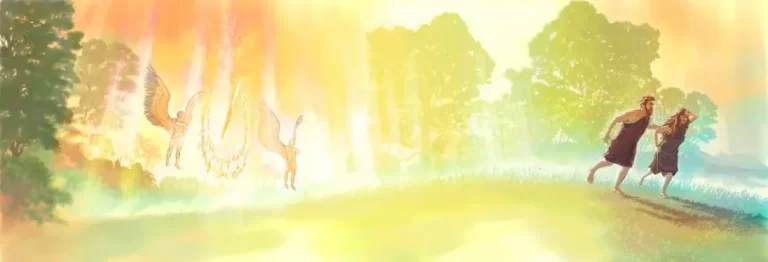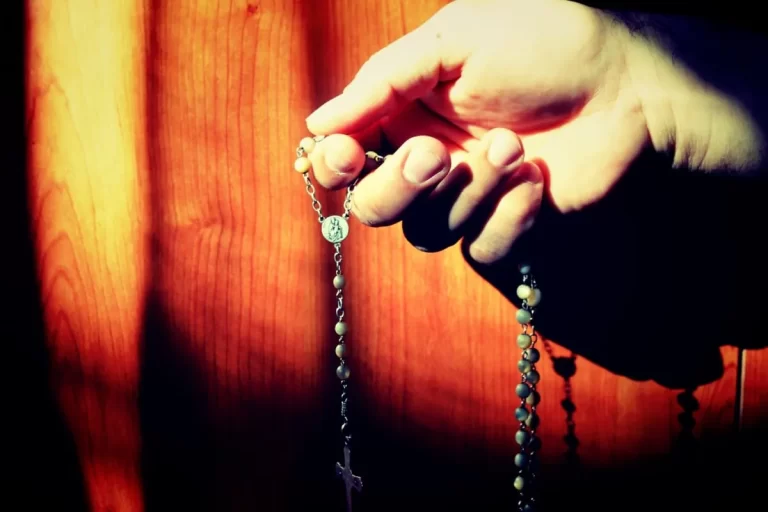The life cycle of the family and its parts
Family life cycle is the name given to the different changes that families go through from the moment they are formed until their dissolution. If you want to know what these changes are, and the social and economic characteristics that families are going through today, be sure to read this article.
family life cycle
The life cycle of the family is that natural process that all families go through over time, just as love evolves and transforms, families do too, and it is even natural that they go through crises, but with love, patience, communication, even the toughest crises can be solved.
Families with varied, these can be composed of: couples, married couples with small children, adolescents or with adult children, and all are valid and equally important.
Regardless of the number of members, without exception, everyone faces problems, crises, ups and downs, but as long as there is love, every problem has a solution.
These ups and downs, good moments and others not so much, are part of the life cycle of the family and there are several characteristics, these changes can be described as stages of the life cycle of the family .
The family has a family history, in which it is natural and necessary that the members of your family adopt different behaviors, experience certain changes and go through different stages that must occur so that they can transform and grow together.
These new behaviors are also conditioned by education, the inclusion of values and norms that society imposes on us and that we understand as we grow up as good or bad and what is or is not socially accepted.
When this life cycle of the family is hindered or dissolved temporarily or permanently (marriage) or when some daily difficulty is experienced such as the fulfillment of our responsibilities or tasks, something called “family homeostasis” occurs.
If this is not resolved then that is when crises and problems arrive. Something similar happens when the family needs to adjust to new activities or dynamics or to transcend from one stage to another.
Like any transition process, it implies certain changes, new roles, tasks and adjustments of many dynamics that at first are difficult to feel that we adapt but that with love, the passage of time and a lot of patience we will achieve and will allow us to grow and adapt in the same way. best possible way to each of them.
When we fail to adapt to these dynamics or do not want to cooperate with them, the immediate path is a family crisis, of course, the idea is to avoid them to also reduce the stress levels that can be generated by this type of situation.
What is a family life cycle?
A family life cycle refers to that series of changes that the family goes through at a given time, for example, marriage crises, the arrival of a new member of the family, when the children grow up and start school, primary, or University.
When the children decide to go their own way, make their own family, have children, each of them implies a new life cycle of the family , a new stage and a new challenge.
Each new challenge implies new responsibilities, but also new experiences, learning and the acquisition of new skills. It is a very small percentage of families that manage to adapt to each new stage without any or with very few novelties.
For example, the death of a family member, the serious illness of a loved one, or financial difficulties are quite strong challenges that we will not always know how to face, but once again this is where love, union and understanding should weigh much more. so that we can all contribute and support each other.
These stages of the family life cycle are:
- Independence, when we decide to face life by our own means.
- Life as a couple or marriage, the first, a moment of knowledge, the second, a learning stage, learning to negotiate, greater commitment, seeking the well-being of the other.
- Parenting: from birth until they are teenagers and they acquire tools to achieve their independence.
- The separation of adult children, or what we know as divorce, a very difficult stage for those who go through it, but for the rest of the family.
- Retirement or old age, a stage in most cases quite difficult to accept, in which many adults feel “useless” or that they have lost the meaning of their life.
Why is it important to understand the family life cycle?
Mastering the skills at each stage of our lives is an art, a period of negotiations, sometimes intense, which can generate tensions both in the couple and in the family.
The life cycle of the lauro estrada family : The stages arise naturally and although it is not an impediment to have all the tools or skills to start this new stage, however, this can generate consequences and make the transitory process much more complex, uncomfortable.
Regardless of the role we have within the family (children, parents, siblings, uncles, grandparents, among others), experiences within the home, learned behaviors, the absence or presence of values, all of this will greatly influence , our decisions, behaviors, behaviors, even, who we become.
What things can alter the normal cycle?
One of the main reasons that can alter the life cycle of the family is stress, routine, lack of communication and empathy, to put ourselves in the other’s shoes and understand them.
How can I improve my family life cycle?
The life cycle of the family can be improved by being more empathetic, understanding and tolerant with the rest of our family.
Introspection, respect, reflection, assuming our responsibilities or seeking psychological advice, are some of the skills and tools to solve and improve our family relationships.
Going through a divorce, forming a non-traditional family (homosexual or divorced couples) are quite a challenge, but with love, everything is possible.
Family Life Cycle Models
There are various models that can be adapted to each of the life cycles of the family, below, we will explain each of them in detail.
Geyman’s model
Geyman’s model is a model that is based on five stages, starting from marriage and ending with the inevitable death. We will briefly explain each of these stages:
Marriage: It begins, the day in which the man and the woman decide to take an important step in their relationship and give themselves that “yes, I accept”, and ends with the birth of the first child of the spouses.
Expansion: This stage develops from the birth of this first child until it is raised and has reached maturity, where it finally ends.
Dispersion: This stage covers from when the first child of the marriage has acquired a high degree of maturity, as well as the rest of the children. A very difficult stage for parents, but also quite satisfactory, because parents see the fruits of their upbringing, children with values, respectful and helpful.
Independence: Like the previous stages, it starts from the end of the previous stage, that is, when all the children born in the marriage have reached maturity and the parents retire or decide to separate due to differences, infidelities, loss of love, among others.
This is a particularly difficult stage for both parties, on the one hand, the children, start their lives by their own means, and the parents, after a productive life and seeing themselves retired, “doing nothing” and feeling that they only serve to Raising grandchildren is hard enough.
Feeling that after a lifetime of supporting their family, at a certain point they can no longer do so and become dependent on their children, is a stage that not everyone can easily accept, which is why communication and support are always important. and show them that they are still important.
Retirement and death: It begins when the parents retire and begin to acquire other tastes, take courses, develop skills and dedicate themselves a little more to them, and of course, ends when both spouses die.
Duvall’s model
The Duvall model is one of the most recognized and used models of all. This life cycle of the family also has several stages, eight, to be specific, and each of them studies a specific area of families (health, psychological, sociological, among others).
Duvall describes eight phases or stages, in addition to assigning positions and responsibilities to each of the family members in what he calls “critical stages”, which is what we commonly know as “family crisis”.
First stage, begins when the couple decides to join in holy matrimony and ends when the first child is born.
The second stage is the raising of children, it begins with the birth of the first child, and ends when said child reaches his first 30 months of age, that is, a year and a half.
Third stage, family with children of school age, begins when the first child born within the marriage reaches the first 30 months of age, and ends when he reaches six years of age.
Fourth stage, family with children of school age (primary), begins when the boy or girl has reached the age of 6 and ends with puberty (13 years).
Fifth stage, covers from puberty until he is 20 years old (family with starting point).
Sixth stage, begins when the first child turns 20 until all the children have left the family nest.
Seventh stage, mature family, begins when the children have left and the parents retire from work, get divorced or die (empty nest).
Eighth stage, from retirement or separation, until the death of both parents.
Carter and McGoldrick model
Carter and McGoldrick’s model brings a fresh perspective that has been one of the most successful by the family today and has caused curiosity for their research.
Those who share this model affirm that families will inevitably go through certain stages, which, being known, are somewhat “predictable”, and in turn, each stage requires a new degree of adaptation.
Put simply, each stage requires a new version of ourselves, new thought patterns, abandoning toxic habits that limit us as individuals and do not allow us to grow as a family.
Evidently, new challenges require a change in an individual way, in order to later be able to experience a collective change, starting from the family and transcending society, in a more macro sense.
Carter and McGoldrick dedicated themselves to studying, developing and identifying six successive stages within the family nucleus, among them, we can mention:
Stage 1: Separation of parents and children.
Stage 2: New commitments, refers to marriage, new families.
Stage 3: Family with young children, adjusting to this new routine and responsibilities.
Stage 4: Family with adolescent children, knowing how to understand them, listening, being a guide. Educate for independence.
Stage 5: Abandonment of children, empty nest, assuming that we are still important but letting our children forge their path.
Stage 6: older family, new roles, certain limitations, retirement, divorce, death of parents.
Model of the World Health Organization (WHO)
The World Health Organization defines the life cycle of the family in 6 stages:
- Training
- Extension
- full extension
- Contraction
- full contraction
- Dissolution

Hello! Let me enthusiastically introduce myself as a dedicated blogger fueled by an intense passion for meticulously crafting insightful and well-researched blogs. My mission revolves around providing you, dear readers, with a veritable treasure trove of invaluable information.







